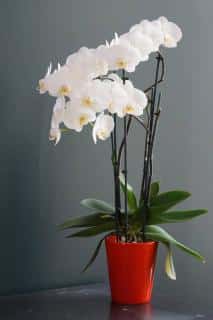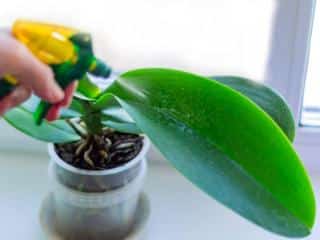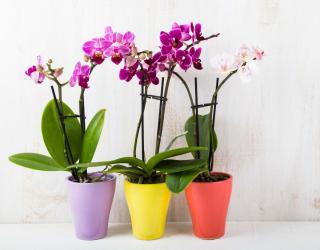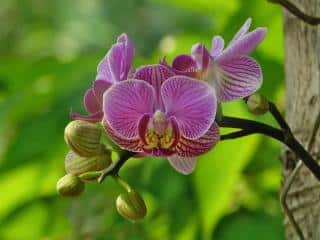

Phalaenopsis orchids are tropical flowers that adapt very well to growing indoors. It’s quite easy to care for this type of orchid, and it can bloom all year round.
From planting and repotting to watering and exposure, here are our tips on proper care to trigger and maintain nice blooming in every season.
It is also called the “butterfly orchid” because its flowers look a lot like that fluttering insect.

Too much sun can be fatal, but not enough of it means it won’t ever bloom.
The ideal temperature is around 65 to 70°F (18 to 22°C).
Phalaenopsis orchid cherishes moisture, and needs to be watered often but without forgetting that the root area must drain well or the roots will rot.
As a consequence, it’s important to avoid soggy substrate while ensuring it always finds the moisture it needs.
Never let water pool up and sit at the bottom of the pot, it’s important to let water drip out completely after watering.
 In spring and summer, water 1 to 2 times a week
In spring and summer, water 1 to 2 times a weekAgain, remember to mist foliage and leaves very often, once or twice day is great if you can manage it.
This recreates the moisture present in its natural environment.
To learn more: How to water an orchid in a pot?

After flowers have wilted, there is a special technique to trigger a new round of blooming.
Phalaenopsis orchid can bloom again after its first blooming:
If this is already the second time the flower blooms, cut the flower scape all the way back to the main stem.

Read also:
Like all indoor plants, repotting is part of the orchid’s life cycle and it supports its root system.
How and when to repot an orchid:
Repotting is important. This step usually is performed every 2 or 3 years and is critical to ensure continued development of your plant.
The orchid is a perfect houseplant: it will bloom for most of the year with only very little care.
Read also on the topic of orchids: